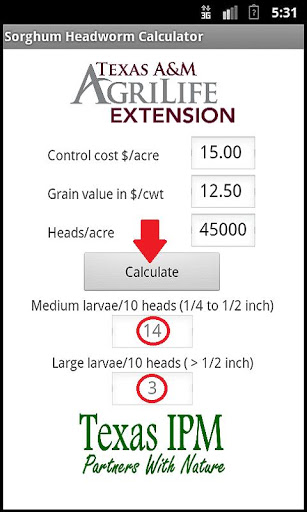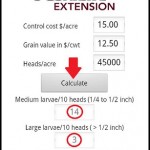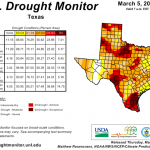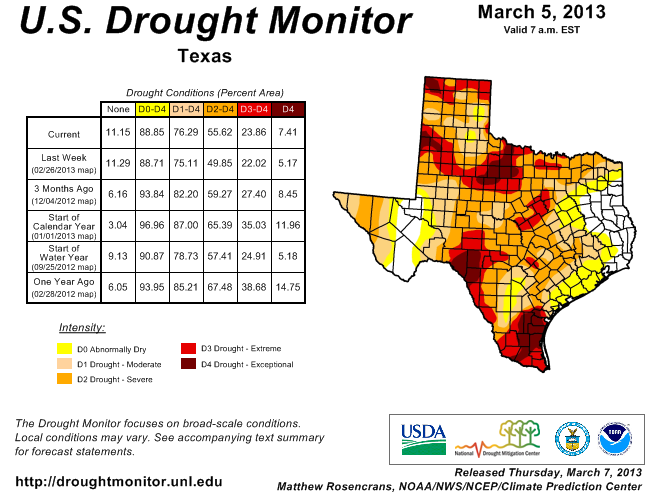
Sorghum Headworm Calculator App Available – Texas A&M AgriLife Extension has recently released a Sorghum Headworm Calculator. This online application tool will assist producers and other pest management professionals in making economically and environmentally sound pest management decisions. The headworm economic threshold in grain sorghum is calculated based on market prices, control cost, and actual damage potential of larval feeding. The tool can be accessed on your computer or smartphone. Details of how to operate the program, and how to collect and enter the data are available with the program. An example screenshot of the tool is located to the left. You can access the link to the online tool by visiting http://goo.gl/szKou.
Water Planning from a Farmers View – Danny Krienke, past-president and current board member of Texas Grain Sorghum Association, recently had an interview with The Texas Tribune on how he manages his water planning decisions on his farm. Danny farms sorghum and other crops in Ochiltree County and is also a member of the North Plains Groundwater Conservation District, which regulates groundwater in eight counties in the upper Panhandle. Danny has been very active in educating farmers, the general public and legislators about on-farm water use as well as being actively engaged in state water policy. Danny noted that he began metering water on his farm in 1988 as part of a demonstration program. Metering in his district began when they wanted to begin conserving water for the future, but wanted to treat everyone equally. In order to do that, they had to know how much everyone was pumping and the only fair way to do that was to measure it. “Everything you think is valuable in life, I think you measure. It’s kind of ironic,” stated Krienke. The rules in his district passed in 2005, requiring meters on new water wells; existing wells can still use alternative methods to measure water use, such as using the fuel bill for pumping to estimate the water use. Krienke noted that new wells cost around $1,200, and there can be some installation costs. As far as state water policy, Krienke states, “I think the in our case – first of all, our philosophy in our district is, everyone has the right to pump, but everyone has their responsibility to conserve…so we have every right, as agriculture, to pump water to grow a crop, but only the amount that we can efficiently use to grow a crop.” Krienke noted that there are many tools out there today to help farmers control and monitor their irrigation equipment.”There is technology out there that allows us to irrigate and make the system run more efficiently,” said Krienke “while you’re not out in the field, problems could happen with the sprinkler and/or the pump and if the sprinkler stopped, then it’s going to sit there and water in one place…we’re just kind of sitting there wasting water.” He stresses that these new tools can you alert you of these new types of situations, and you can have access to turn your water off right from your phone, wherever you may be. To read Mr. Krienke’s full interview with The Texas Tribune, click here.
Recent Texas Drought Monitor Released – The state’s ability to overcome the drought that began two years ago, has not seen much of a road to recovery. National Weather Service rainfall maps show that southwest Texas received no rain last month, while southern areas of the state saw no more than a tenth of an inch. The snow storm in the Panhandle helped to pull some of the area out of “exceptional drought” but the area still remains in drought conditions.











